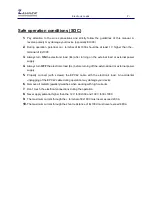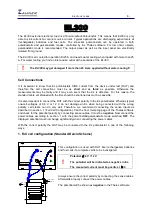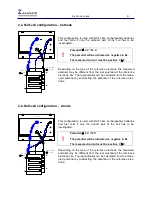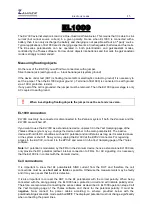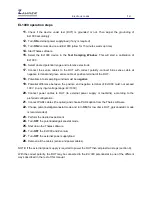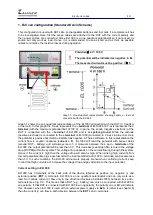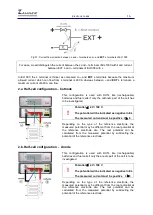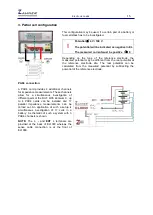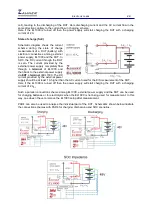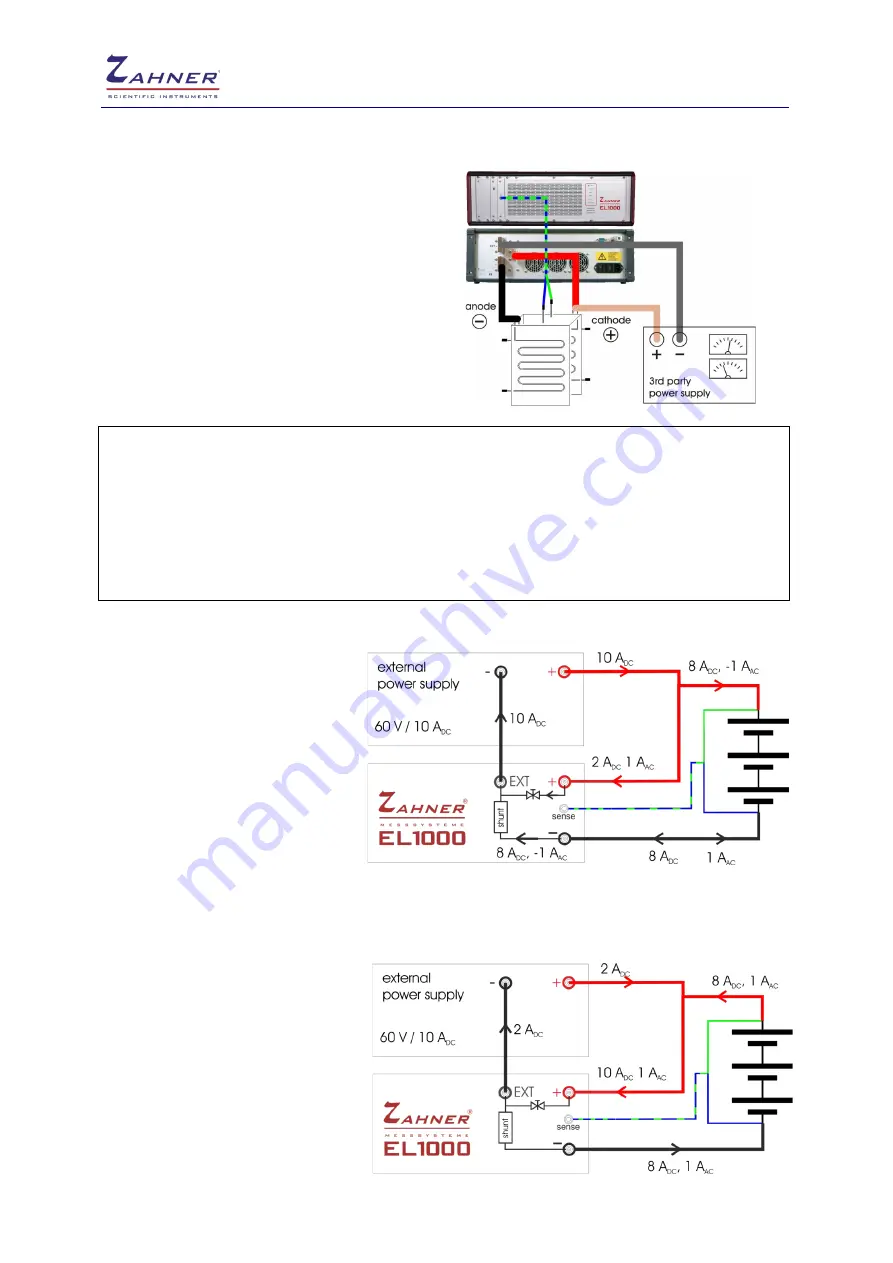
Electronic Loads
-
21-
6. Applications with an additional power supply (external input)
This configuration allows experiments under
following conditions:
•
Charging batteries
•
State of charge (SoC)
•
Discharging batteries
•
Fuel cell and electrolysis cell operation
!
The external power supply operates as a galvanostat (setting current limit) and provides
a higher potential as the DUT.
EL1000 setting DC current:
Charging: current through DUT is NEGATIVE
SOC: current through DUT is ZERO
Discharging: current through DUT is POSITIVE
During EL1000 startup and calibration, do not sink or source external DC current.
Charging:
Schematic diagram shows the
current scheme during the charging
of the DUT (battery) with electrical
connections
among EL1000,
external power supply and DUT.
Here, a charging current is flowing
through the battery. The additional
current provided by the power supply
flow towards the
+ terminal
of
EL1000 and from there to
EXT +
terminal
of EL1000, eventually back
to the power supply. Here the AC
current is in reverse direction than
the charging current. As between the
+
and
– terminals
of EL1000 the current flow is allowed in only
one direction.
In such a scheme when the EL1000 is not being used for the measurement or turned off then all the
current flows through the battery, charging it.
Discharging:
Schematic diagram shows the current
scheme during the discharging of a
DUT (battery) with electrical
connections among external power
supply, EL1000 and the DUT. Here
the current flow through the DUT is
set higher than the current provided
by the external power supply. In such
a case, the additional current is
provided by the DUT (battery or fuel

